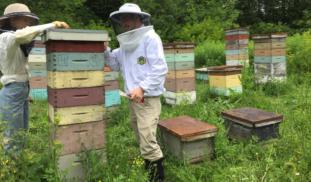Please wait...
About This Project
Crop pollination by migratory beekeeping operations presents a highly concentrated convergence of bees where diseases may be transmitted and spread as hives are transported throughout the US. To test if migratory operations contribute to the spread of disease, we propose an experiment where we subject hives to almond pollination in California and compare their disease loads to stationary hives in N. Carolina. Upon the return of the migratory hives, we will measure subsequent disease spread.

Browse Other Projects on Experiment
Related Projects
Using eDNA to examine protected California species in streams at Hastings Reserve
Hastings Reserve is home to three streams that provide critical habitat for sensitive native species. Through...
City smart: Are cities making birds smarter?
One cannot go to Florida and miss the White Ibises roaming golf, park and private lawns. But how does a...
How do polar bears stay healthy on the world's worst diet?
Polar bears survive almost entirely on seal fat. Yet unlike humans who eat high-fat diets, polar bears never...




